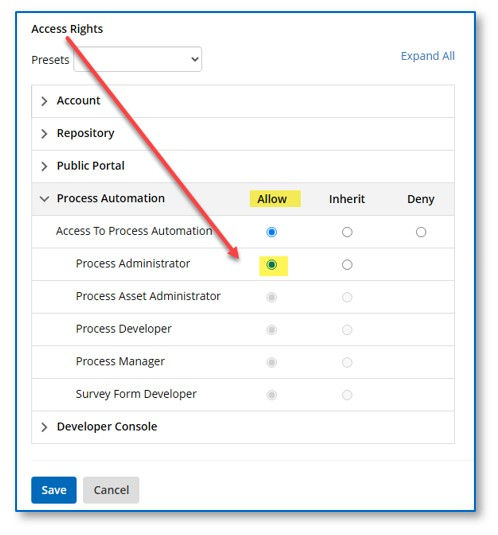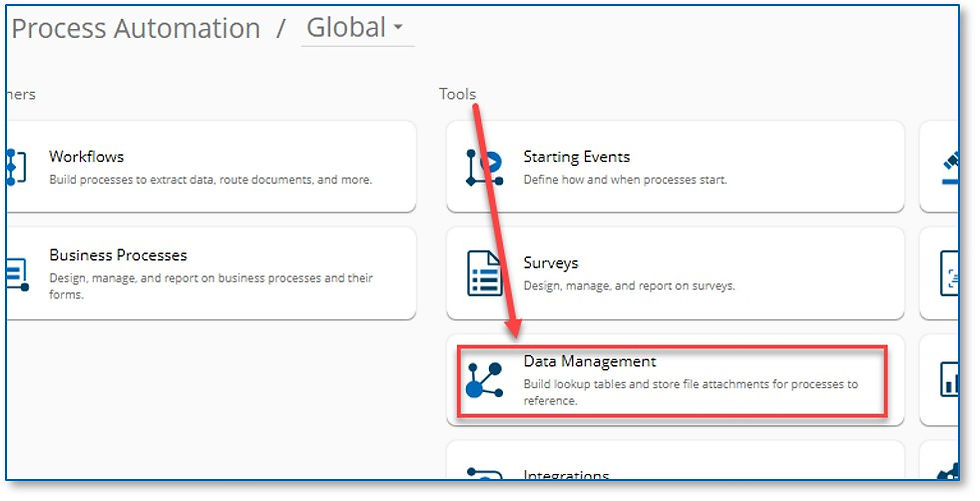Creating Your First Lookup Table in Laserfiche Cloud
- CDI

- Nov 20
- 3 min read
Updated: Nov 26
By Kyle Knebel
Consultant Corner – November 2025
This month’s article will show you how to quickly and easily create a lookup table in Laserfiche Cloud for use with a Forms business process or with a workflow. Starting with a spreadsheet or tabular data like in a .CSV file, you can use this data all through Laserfiche Cloud Process Automation.
Let’s build!
Depending on your subscription tier (Professional or Business) there can be some limits, as seen in the table below.

A Lookup Table is perfectly acceptable for data that doesn’t change much. Why? If the source data is a locally stored file, you will manually Update the existing data, which will overwrite the data. Be sure to use a file that has the same columns and data types, for example, text and number (Integer). If the Columns and Data Types are different, you could break the lookup rules that previously worked.
Step 1: Log-in as a user with Process Automation privileges.
Note: To enable Process Automation privileges, select the User under Account>Users and then select the appropriate username under the “Users” tab.

Step 2: Click on the User account to edit their properties, then scroll down to the “Access Rights” section. Expand the “Process Automation” section and click the radio button to Allow the user to be a “Process Administrator.”

Press Save.
Step 3: Back on the top-right corner, use the App Picker to navigate to “Process Automation>Overview”.

Step 4: On the “Tools” center column, click on “Data Management”

Step 5: Here you can Create and Update Lookup tables.

Step 6: Create a New Lookup table using New>Lookup tables. Give the new table a name (without spaces), then click the “Choose File” button to upload your spreadsheet or CSV file.
Note: The first row of the spreadsheet should be the column names.

Step 7: Once the file has been chosen, check any options boxes.
Enable for Dynamic Fields: allows the lookup table to be used as a data source for Laserfiche templates and fields when configuring dynamic fields.
Read-Only access to data: option to prevent modification of lookup table values.
Preserve Whitespace: when not selected, Laserfiche will trim leading and trailing whitespace and normalize internal whitespace to a single space character.
Step 8: Click Next to view the confirmation window, which allows you to verify that the uploaded data looks correct and is the right data type format.

Step 9: When satisfied that the data looks correct, press “Create”. The table will then be displayed with its columns and data. The Update and Download buttons are available in the left corner.
Note: If you ever lose the original data file, downloading the lookup table data will result in a .ZIP compressed file containing a .CSV file.

From this point, with data in a lookup table, you can create queries against the information. A query can be run in a Workflow or used to display information in a Business Process form.
If you have the table open, you’ll see the information panel on the right side of the screen (see image below). Clicking on the blue “Create a lookup table query” link will open a dialog box where you can begin building a custom Select, Insert, Update or Delete query.
For documentation on how to build a Query, use this link to the Laserfiche Cloud “Getting Started with Queries” help topic here.

Laserfiche Cloud Lookup Tables are a great way to help automated processes like Workflows or Business Processes to apply decision making logic. Or use a lookup table to show lists of choices in a Template with Dynamic Fields.
Try one today!




Comments